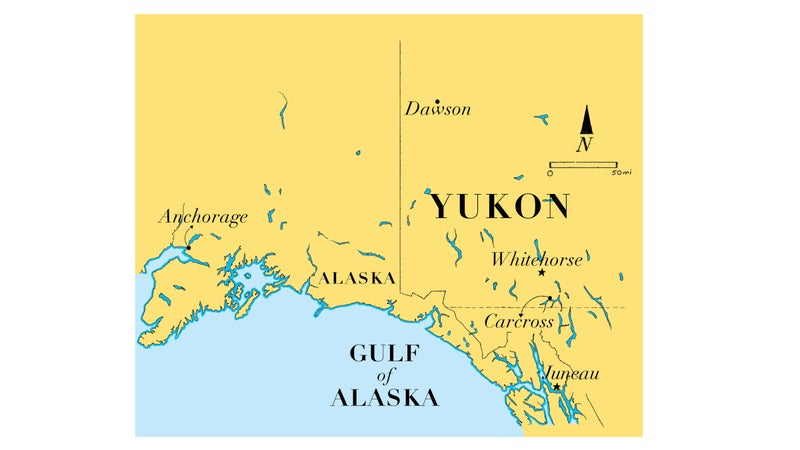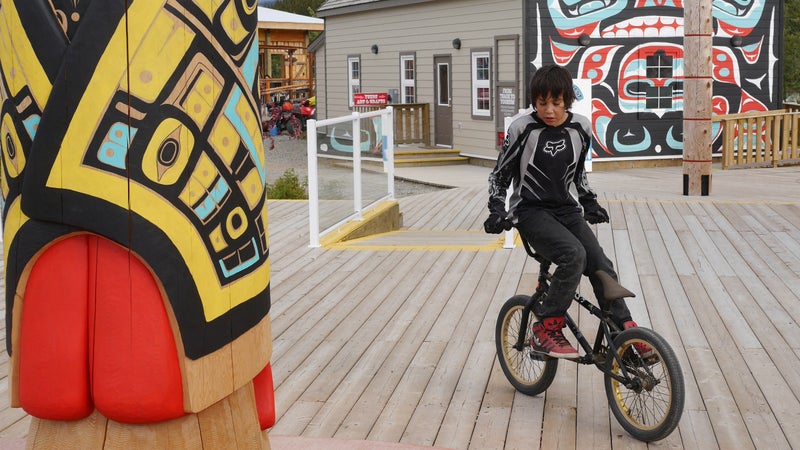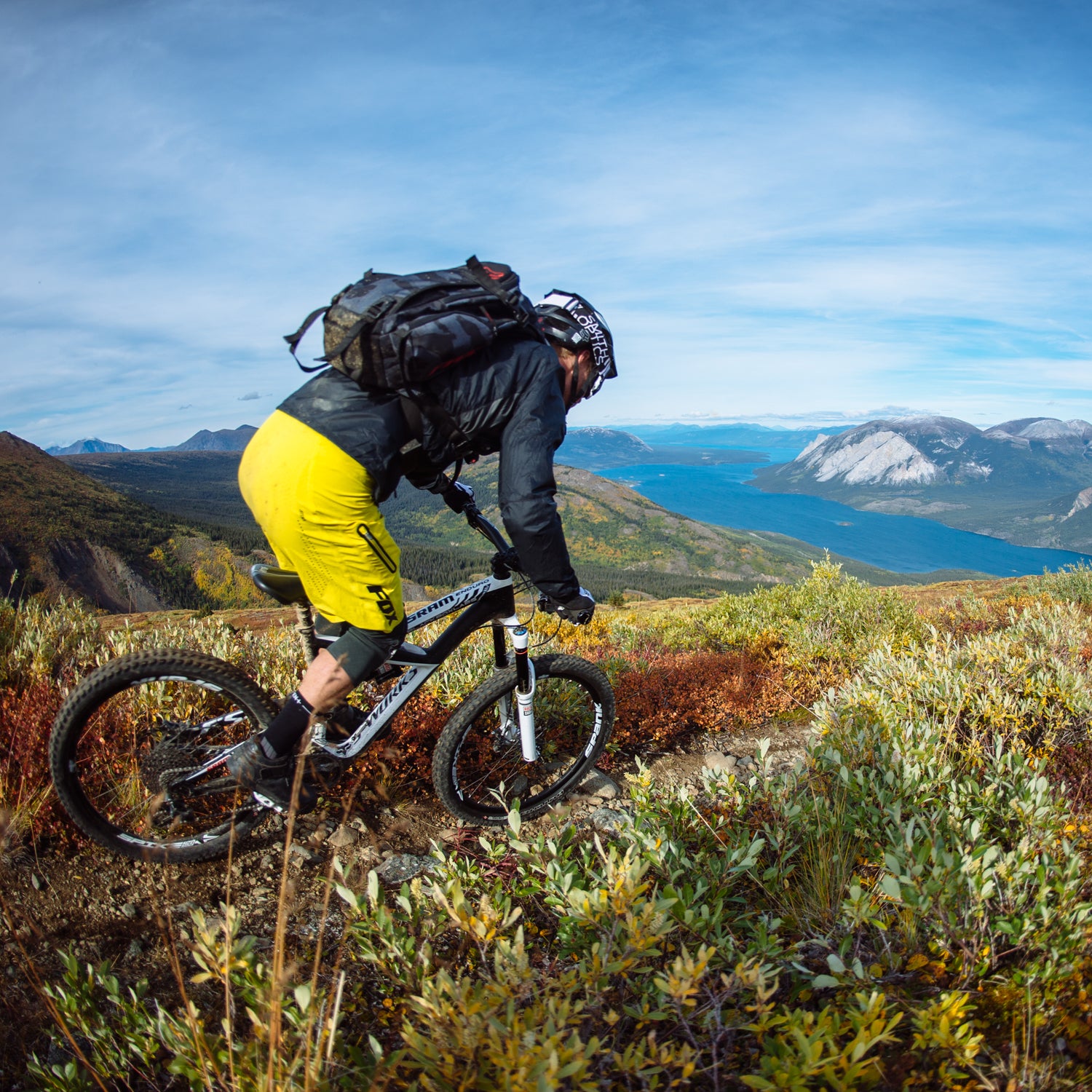Every weekday during summer, Marshall Jonas wakes up at 6:30 in the morning, puts on his boots, and hikes through spruce and poplar boreal forest to his work site: Midnight Dome, a 2,911-foot peak overlooking the Yukon town of Dawson. The 26-year-old member of the Trondek Hwechin First Nation uses picks, hoes, axes, sledgehammers, and sometimes a chainsaw to build and maintain mountain-bike trails in the northern Yukon. “Mountain biking is my life. It’s done everything for me,” says Jonas. “I don’t know what I’d do without it.”
The Yukon is widely known for its world-class trails, particularly the 435 miles of them surrounding Whitehorse, the territory’s capital. But in-the know mountain bikers are looking beyond the city, toward the 51 miles of flowy trails around Carcross and the 60-degree down-hill runs near Dawson. As pro mountain biker says, the trails in these spots are “fricking ridiculous.”

Towns in the Yukon have long depended on trails for their livelihood. During the , from 1896 to 1898, more than 30,000 prospectors traveled the territory’s footpaths. Half a century later, Jonas’s relatives guided surveyors along ancestral routes to explore for oil. Even today, the only way to get from Dawson to Moosehide, the village where Jonas’s grandmother once lived, is down a small dirt path.
In 2005, a Carcross development adviser who was searching for new economic opportunities approached Jane Koepke, a Whitehorse tourism consultant. Koepke, an avid mountain biker, came up with an ambitious trail-building proposal, but first she had to convince the council that oversees tribal land use. Decades of antagonism had left the community distrustful of outsiders, and some First Nations members feared that the trails would disrupt the mountain’s caribou herd.
“When I first moved to Carcross from Whitehorse to do this project, a lot of my friends told me I was crazy,” says Koepke. In 2006, she got permission to start a trail-building crew and secured regional government funding to launch a program that would train kids from the Carcross/Tagish First Nation to build a 25-mile trail network on Montana Mountain, a sacred site. One of the first employees was Shane Wally, now 26.
“Trail building got me out on the land like my ancestors were doing with trading,” says Shane Wally. “We’re building our own little economy up here.”
“I was getting into trouble drinking,” he says, “but when I got on the trails, it opened my eyes to what I was doing to myself.”
Wally eventually supervised a crew of six First Nations kids (including his sister, who hopes to have her own crew someday) and made $25 per hour in an area where the average is $17. “Trail building got me out on the land like my ancestors were doing with trading,” he says. “We’re building our own little economy up here.”
The trails on Montana Mountain—such as 17-mile Mountain Hero, which rises and falls a combined 7,500 feet—have created a industry in Carcross outside of the cruise ship passengers stopping over from Skagway. (Many residents make most of their income in summer, though municipal jobs are steady during the winter months.) The estimated 2,500 annual visitors who come from Canada, Europe, and the U.S. to mountain bike have spurred developments like Carcross Commons, which has a coffee shop, a restaurant, and micro-retail spaces; there are also plans for a nearby 42-unit vacation home subdivision and a waterfront hotel.

The idea has since spread 372 miles north to Dawson. When Marshall Jonas heard about the Carcross trails in 2013, he approached his own First Nation council to secure funding to build the 3.3-mile downhill run off Midnight Dome. The chief agreed, and two years later they completed “a freeride trail that’s gnarly like Whistler,” says Jonas.
Other indigenous populations are taking note, too. On Vancouver Island, rider and filmmaker Riley McIntosh started in 2015 to hire First Nations youth to build a singletrack network. Last year, on the Navajo Nation in Arizona, a grassroots nonprofit called partnered with Engineers Without Borders and others to build pump tracks in the 600-person community of Shonto, 127 miles north of Flagstaff, and elsewhere across the Navajo Nation.
The new projects aim to boost tourism and the local economy, yes—but they’re also reconnecting young people like Jonas with the land and his ancestors.
“The trail we’re building right now is really close to the Moosehide Trail that my grandma walked when she was young. She passed away, but I feel really close to her up here.”


